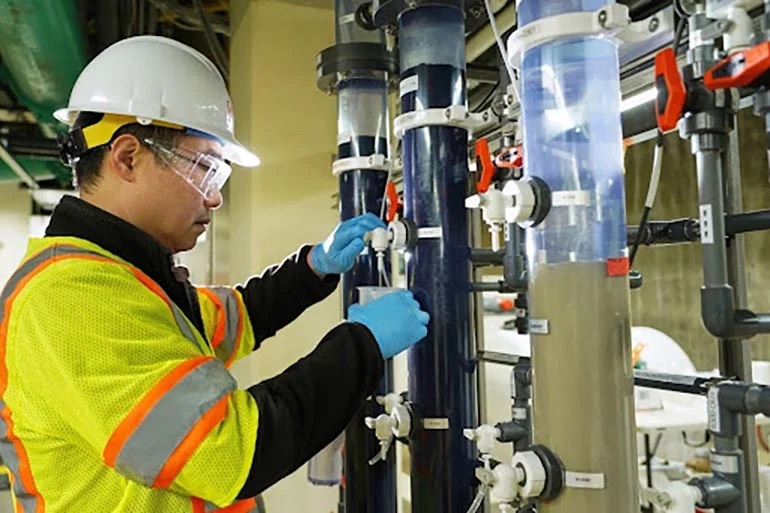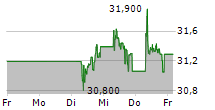NORTHAMPTON, MA / ACCESS Newswire / May 6, 2025 / Veolia North America
Per- and polyfluoroalkyl substances (PFAS) have emerged as one of the most significant environmental challenges of our time. Fortunately, traditional treatment approaches like coal-based granular activated carbon (GAC), ion exchange (IX) and advanced technologies such as foam fractionation and high-rejection reverse osmosis have proven effective in addressing PFAS contamination.
But here's an unexpected twist: some of the most promising innovations in PFAS treatment are remarkably simple - who would have thought that corn, coconut and clay could treat PFAS?
Understanding the PFAS Challenge
Before diving into these innovative treatment approaches, it's important to understand why PFAS pose such a unique challenge. These synthetic chemicals have been used in everything from non-stick cookware to firefighting foam since the 1940s. Their strong chemical bonds, which make them excellent at repelling water and oil, also make them incredibly persistent in the environment.
The Natural Arsenal: Corn, Coconuts and Clay
How to harness the power of natural materials to combat PFAS contamination? With any of these approaches, engineers convert natural materials into a product that has proven to filter PFAS in water.
These include:
Corn-Based Materials: Among nature's solutions to PFAS, corn stands out as an unexpected hero. Novel media treatments are using corn-based materials, specifically cyclodextrin derived from corn, that can effectively adsorb PFAS molecules. This sustainable approach can not only provide effective treatment but also offers an environmentally friendly solution using renewable resources.
Coconut-Derived Carbon: Granular activated carbon (GAC) made from coconut shells has proven to remove PFAS from water in some studies. The natural structure of coconut-shell carbon creates an ideal surface area and pore size for PFAS adsorption.
Specialized Clay: Because of their natural ability to hold onto PFAS molecules, clay-based materials have shown promising results in PFAS treatment. The layered structure of certain clays also provides an ideal framework for PFAS capture.
The Science Behind the Solutions
These natural materials work through different mechanisms to treat PFAS-contaminated water.
Adsorption: GAC, corn and clay-based materials use adsorption, where PFAS molecules physically attach to the surface or become trapped inside the micropores within the material, similar to how a sticky note adheres to a bulletin board. The large surface area of these materials provides countless attachment points for PFAS molecules.
Ion Exchange: This process works through an electrical charge interaction. PFAS compounds are typically negatively charged (anionic), so they're attracted to and captured by specialized anion exchange resins that have positively charged sites. Think of it as a selective filter that specifically targets and captures negatively charged PFAS while letting other molecules pass through. Some treatment systems combine these ion exchange resins with natural materials for enhanced removal.
Benefits for Communities and Industries
This natural approach to PFAS treatment offers several advantages:
Sustainability: Using renewable resources like corn and coconut shells supports environmental sustainability
Proven Effectiveness: These methods have demonstrated high removal rates for various PFAS compounds
Versatility: They can be implemented in both small and large-scale treatment systems
Looking Ahead: The Time for Action
As PFAS regulations continue to evolve, these treatments offer solutions for communities and industries facing PFAS challenges. Leading environmental firms and municipalities are already seeing promising results from pilot programs that combine traditional technologies with innovative natural materials. For organizations that haven't yet addressed PFAS concerns, the time to act is now - waiting could mean facing stricter regulations, higher treatment costs and increased public scrutiny down the road.
For municipalities and industries, taking action today means:
More options to achieve compliance with emerging regulations
Sustainable solutions that align with environmental goals
Improved public confidence in water quality
Nature and Science: Partners in Progress
The fight against PFAS contamination demonstrates how solutions can sometimes be found in the most unexpected places. By harnessing the natural properties of materials like corn, coconuts and clay, we're developing more sustainable and effective ways to address one of our most pressing environmental challenges. As we continue to advance our understanding and treatment of PFAS, these natural solutions may play an increasingly important role in creating cleaner, safer water for future generations. For communities and industries seeking to address PFAS contamination, these innovative treatment methods offer a promising and practical path forward - and those who act now will be best positioned to meet tomorrow's challenges.

View additional multimedia and more ESG storytelling from Veolia North America on 3blmedia.com.
Contact Info:
Spokesperson: Veolia North America
Website: https://www.3blmedia.com/profiles/veolia-north-america
Email: info@3blmedia.com
SOURCE: Veolia North America
View the original press release on ACCESS Newswire:
https://www.accessnewswire.com/newsroom/en/utilities/how-corn-coconuts-and-clay-are-helping-treat-pfas-1024043



